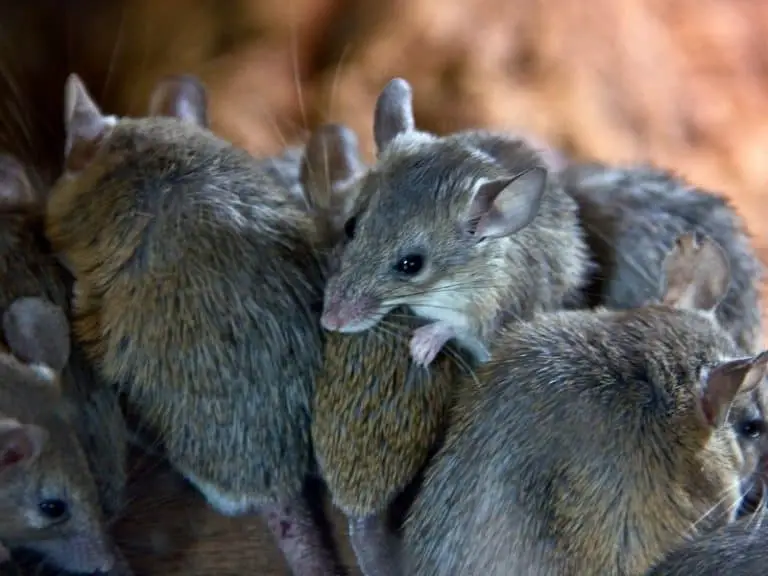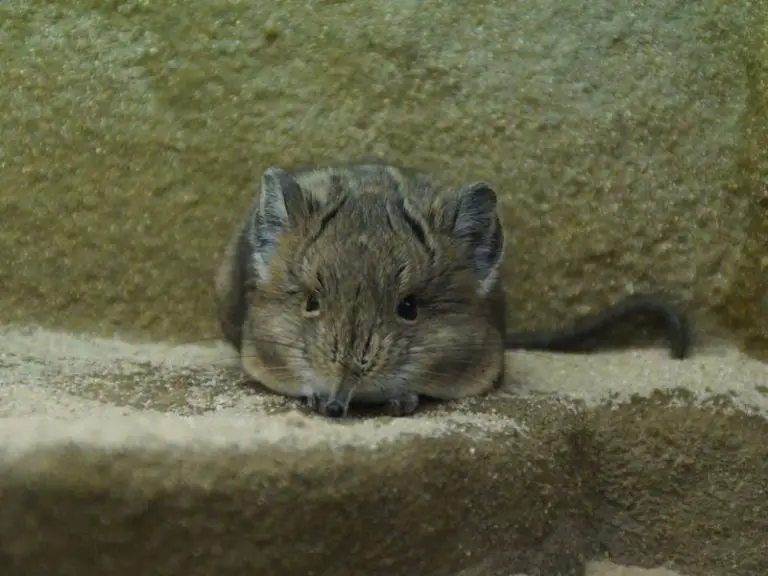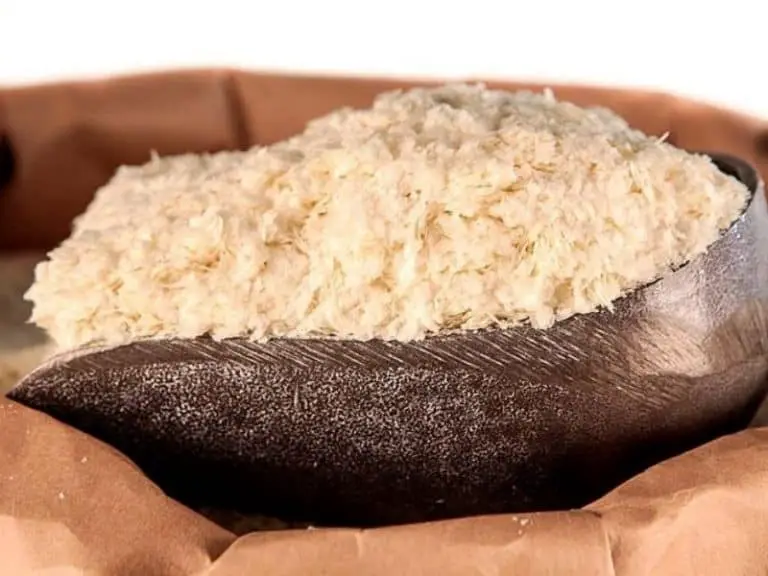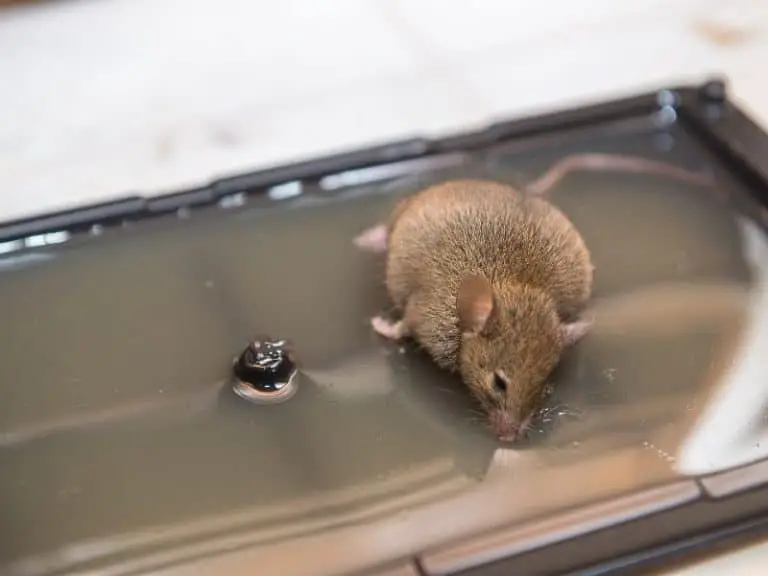9 Things to Check To Know If Mice Are Still In Your House
“How do I know if I killed all the mice in my house?”, that is a question a frustrated homeowner might ask after dealing with a mouse infestation. The answer to how you have gotten rid of all the mice infesting your home is surprisingly easy.
The way you know that you have killed all the mice in your house is that you can no longer find any traces of them. These traces include lack of droppings, the absence of tracks, empty nests, noises at night, or even the pungent odor mice leave behind.
Making sure that you are rid of mice is something that you can do if you are familiar with the signs that mice are still in your home.
Here’s how to know if you killed all mice in your house.
Mice Leave Droppings and Urine Pillars
This particular point is pretty clear: mice are not toilet trained. They leave their remains anywhere, and how would you know if you have killed all the mice in your house is that you would see less of it.
Droppings are the most common sign of mouse activity, and they are easy to spot if you know where to find them.
A mouse commonly leaves between 50-80 droppings a night, each measuring between 3-8 mm.
They get dropped at random (they definitely are not toilet trained). The best places to find them are in or above cupboards and on floorboards.
The latter is a likely place where you could droppings alongside mice tracks.
One sign that you really have not killed all the mice in your home are urine pillars. This can be found where a major or extended mouse infestation happens.
They normally measure half an inch wide and up to 2 inches high. Urine pillars comprise body grease, dirt, and urine (hence the name). It is likely to be found where droppings are located.
If there are still mouse droppings or urine pillars, the way to dispose of them is not to sweep or vacuum them away, because bacteria or virus particles may be emitted when disturbed.
Use gloves when carefully handling them, place them in a plastic bag, and seal tightly before disposing of them. When there is a lot, use a respirator or wear a mask when cleaning them up.
Mice Leave Tracks Behind
Mice, like other land animals, leave tracks behind. Mouse tracks are marked by dirty smudges on the surface in a regular pattern, and they occur along walls and on floorboards.
This is a sure sign that mice have not left your home, even if you have attempted to kill all of them. You could trace them to where they might possibly be hiding.
Mice tracks are more obviously visible in places like unused lofts and basements where there is plenty of dust. This makes the already greasy prints even more visible.
However, if the floor there is not as dusty and the prints they leave not too obvious, a way of telling whether mice have walked across the room is by laying out talcum powder.
The reason one could trace mouse paths is that mice are creatures of habit and tend to take the same path around a space every night.
Mice have a poor sense of sight, so they move along walls they can feel with their fur to find their way around a room.
Another telltale sign that you are dealing with mouse tracks? Droppings and urine traces.
Mice Make Noises at Night
Rodents such as mice and rats are nocturnal creatures. They simply work better at night.
Because of this, one sign that you have not rid yourself of mice are certain kinds of noises one would detect at night.
These often come from behind walls, above ceilings in gaps, and attics and lofts. This is sure sign mice are still there.
What kind of noises do mice make at night? Scratching noises indicate that mice are climbing, crawling, or digging. Gnawing noises are signs that they are chewing.
Scurrying noises indicate that mice are moving from one part of the house to another. And squeaking noises indicate that mice are communicating with each other.
A point we will often repeat in this post is that the presence of one mouse most likely indicates the presence of others.
If you hear these noises at night from places you know you would not hear them, you can be sure that there are still mice left at home.
Be especially wary of gnawing sounds; they may be chewing on wires!
Mice Leave Holes in Material
Mice make nests by assembling material they have gathered. In the wild, they make use of leaves and twigs. When in a home, though, they rely on what is there.
A mouse nest indoors is often an assemblage of paper, string, or other useful material they may find around the house. The question is, how do mice get around to building them?
The answer?
They scavenge for material.
How?
They go around the house and look for material in bedding, clothing, insulation, and other places in the home.
Mice leave holes, tears, and other signs of being gnawed through, and take the materials they have gathered to build their nests. These holes and tears should not just be regular wear and tear.
If you are lucky, one sign that you have not gotten rid of all the mice in your home is finding a nest of mice.
They are usually found in dark corners, especially in storage boxes, behind large appliances, in drawers, or in cabinets.
Mice usually build them by making holes in drawer and cabinet bottoms and filling them with the material they’ve gathered.
Mice Leave Teeth Marks and Gnaw on Wires

Mice have exceedingly sharp teeth, and these teeth grow pretty quickly. They can be a nuisance for mice, so they must find a way to blunt them.
Like blunting a sharp knife, repeated contact with a hard, inedible surface inevitably wears their teeth down to something with which mice can live. The question is, where to find them?
Mice will look for places around the house to sink their teeth into. Wood is an obvious target; look for teeth marks in the bottom of bannisters that aren’t a clear sign of weathering.
Plastic is another target, where marks on solid plastic containers or items might indicate something is not right. One target they frequent, though, is the wiring.
Because wiring is often protected by insulated plastic, and mice are fond of gnawing on it, a sign of mice still being present in your home is if you see insulation shredded off, exposing a wire.
Especially with electrical wiring, this can be a huge problem. A stray spark from exposed wiring can trigger an electrical fire. Rodents are guilty of most of them.
Mice Leave a Distinct Smell
Like any other creature, mice smell of something. It is not a pleasant smell; there are no such things as mouse perfume.
One sign that you have not gotten rid of all the mice in your home is that it still reeks of mouse. We want to answer two questions here: how do they smell and where can you find a mouse scent?
Mice smell of ammonia. Ammonia is found in one other substance we humans emit: urine. Mice urinate frequently. Hence, most pest control experts will tell you that mice smell like stale urine.
This is somewhat challenging to detect, but is stronger with the number of mice present. If you really smell it where we expect to smell it, chances are there still are mice.
The question is where can you find them?
The most obvious place would be enclosed areas such as cupboards or drawers, whereas we have said mice are likely to nest.
Other obvious places would be along walls and near floorboards where the scent helps mark their territory. The rule of thumb is, the stronger the scent, the more mice would be there.
Mice Tamper With Food Packages to Eat
Rodents are scavengers, and mice will do anything to find food. Their agility and a keen sense of smell help them find food and ways to get into it.
Apart from food scraps, which should not be tolerated, another source of food for mice are food containers, which are often stored in cupboards and on shelves.
When mice identify a regular source of food, they may come back as much as 30 times a day. They will particularly target packages that they can easily open by gnawing.
Remember, mice have very sharp teeth and will not hesitate to use them. Particularly vulnerable types of containers are made of thin plastic or cardboard.
Seeing holes and gnawed material and spilled food in your cupboard is a sure sign that you have not killed off all the mice in your house.
First of all, the key is to store food in tamper-proof plastic or glass containers where mice are less likely to make inroads.
Secondly, if you do have food that is tampered with by mice, throw it away because it may carry disease.
Mice Can Distract Your Pets
We have all heard about how cats and dogs still keep a bit of that hunting behavior which is part of their instincts.
Never is this truer when it comes to finding unusual things around the house, whether it is a new or unfamiliar person or a strange animal.
This is the reason your pets may find the presence of mice something that would excite them.
What are signs that they notice that mice are there?
They may be seen sniffing around corners of the house that you would find unusual, like around walls and near large appliances.
They may be pawing at cupboards and drawers, or storage boxes. Or they may be waiting to pounce near places where they sense there is a gap in the wall.
Cats and dogs might sense what you may not sense. They can pick up the faint sounds of mice scurrying or scratching behind walls, or smell the faint odor of mouse urine that only tends to reek when there is a lot of it.
And when they do see a live mouse running around, they will start the chase. Your pets know when there still are mice at home.
Mice Are Seen, Dead or Alive
This is one of the clearest signs that you have not killed all the mice in your home.
You may happen to see a mouse on your way to the bathroom at night. You may see one scurrying along the wall in the daytime.
You may feel that your efforts to eradicate house mice are fruitless. Do not lose heart; do-it-yourself pest control rewards persistence.
A dead mouse is a slightly different story. It is easier to tell if a dead mouse is at home; the stench of rotting flesh gives it away.
As with droppings and urine pillars, the best practice is not to vacuum or sweep the corpse. Use gloves to pick it up, place it in a bag, and place it in still another bag before throwing away.
Remember, when you have seen one mouse, dead or alive, there may be more. That is why when it comes to getting rid of house mice, patience and persistence is crucial.
Whether you are using traps to capture mice already there, or you making sure mice do not enter your house, be prepared to invest some time and effort.
If all else fails, of course, do not hesitate to call in a pest control professional. They will help you resolve your mouse worries.
Do mice leave on their own?
While it is tempting to hope that mice will leave on their own, this is not the case. Mice will not leave by themselves even if you deprive them of food, water, or shelter. The best thing to do is to trap them and prevent other mice from entering in the first place.
Note also that if you see one mouse, it is a good chance, that there are more of them in your house. To prevent new mice from coming into your house make sure that all entry points, such as pipes, are sealed properly. Check my post on how to properly seal the pipes to avoid mice infestation.
Medical Disclaimer: TheHomePestControl is a digital publisher and does not offer personal health or medical advice. The contents of this website are not intended to substitute for professional medical advice, diagnosis, or treatment.
Affiliate Disclaimer: As an Amazon Associate, I earn from qualifying purchases made on our website. If you make a purchase through links from this website, I may earn a commission at no additional cost to you.






